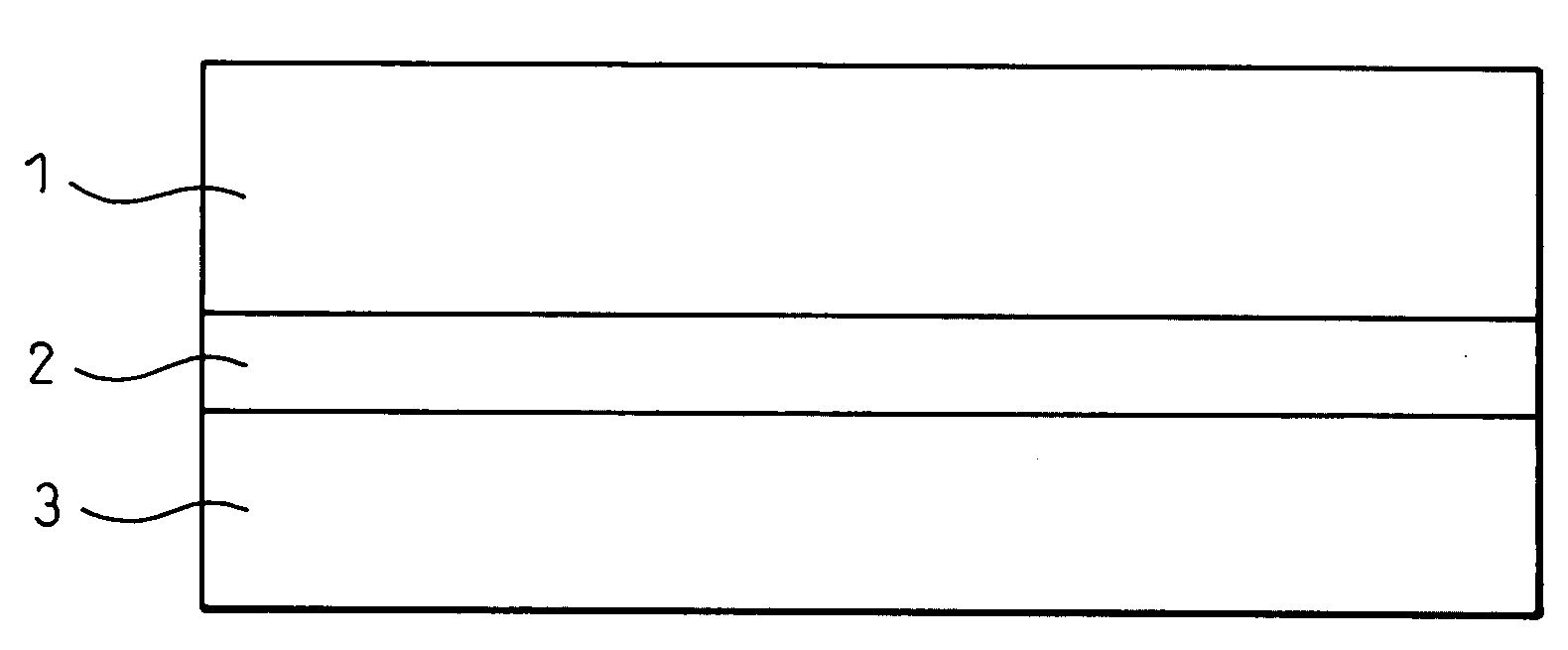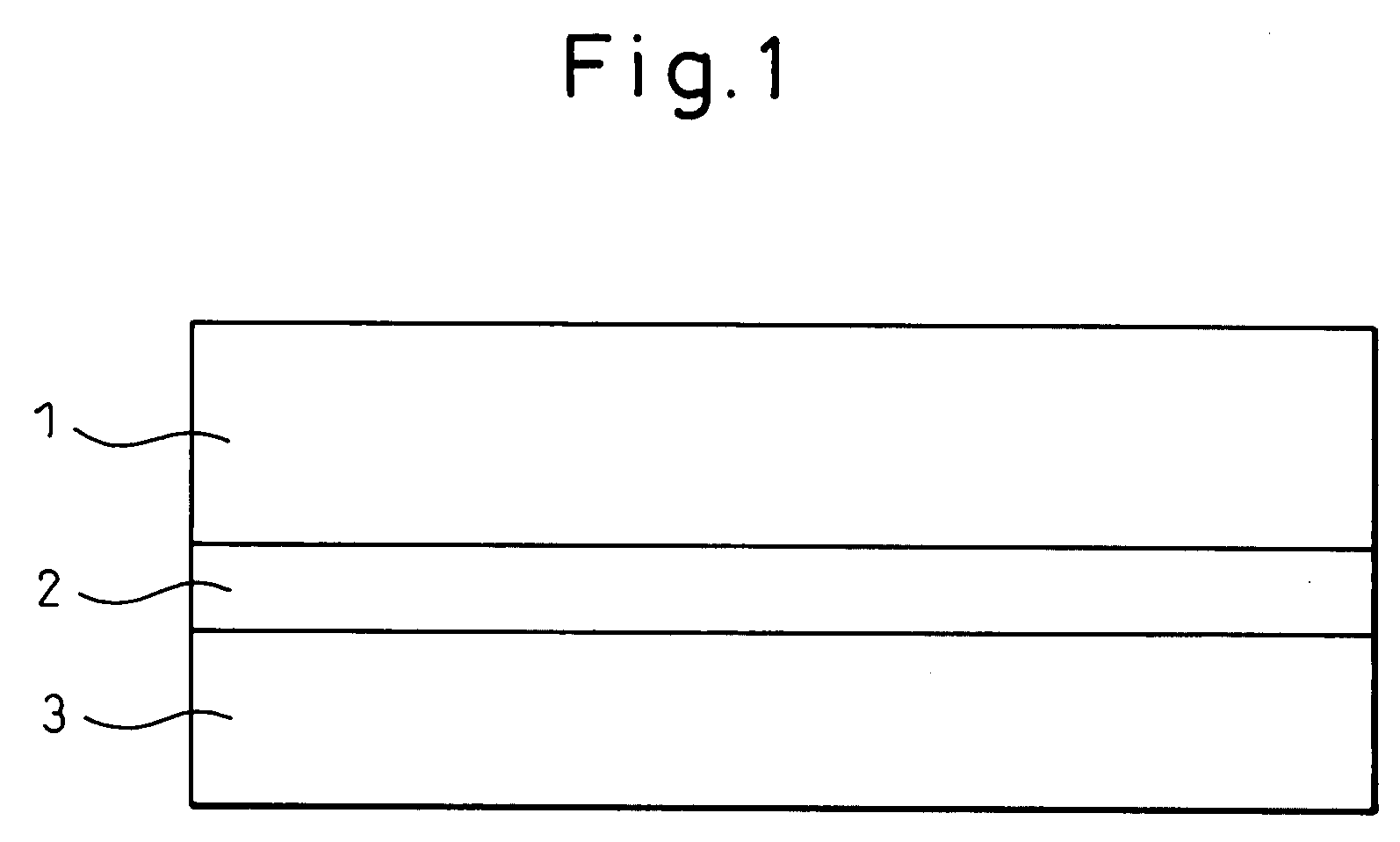Support Substrate for Separation Membrane
a technology of support substrate and separation membrane, which is applied in the direction of synthetic resin layered products, textiles and paper, woven fabrics, etc., can solve the problems of increasing the risk of tearing through, affecting the treatment efficiency of the substrate, and affecting the effect of the separation membrane, so as to achieve excellent strike-through prevention
- Summary
- Abstract
- Description
- Claims
- Application Information
AI Technical Summary
Benefits of technology
Problems solved by technology
Method used
Image
Examples
examples 1-14 , 18
EXAMPLES 1-14, 18, COMPARATIVE EXAMPLES 2, 4-6, 8-12
[0139]As the back layer, ordinary PET was used for extrusion toward a filament group-shifting collecting net, and spinning was carried out by a spun bond method at a spinning temperature of 300° C., at a spinning speed of 3500 m / min, after which the filaments were sufficiently opened by corona charging to about 3 μC / g, to prepare a thermoplastic resin filament web on the collecting net. The filament diameter was adjusted by changing the discharge volume.
[0140]Next, for the middle layer, PET (solution viscosity: ηsp / c=0.50) was used for spinning by a melt blow method under conditions with a spinning temperature of 300° C. and heated air at 1000 Nm3 / hr / m, and blowing onto the thermoplastic resin filament web. Here, the distance from the melt blow nozzle to the thermoplastic resin filament web was 100 mm, the suction force on the collecting surface directly under the melt blow nozzle was 0.2 kPa, and the air speed was 7 m / sec. The fib...
example 15
[0147]A laminated nonwoven fabric having a thermoplastic resin filament / melt blown fiber / thermoplastic resin filament structure was obtained in the same manner as Example 1. However, the heat bonding conditions with the flat roll were a line pressure of 367 N / cm and a roll temperature of 225° C. on the surface side (coating side) and 215° C. on the back side.
[0148]The support made of the obtained laminated nonwoven fabric and its evaluation results are shown in Tables 1 and 2.
example 16
[0149]A laminated nonwoven fabric was obtained in the same manner as Example 1, except that the calender roll temperature was 231° C. for both the surface and back sides, and the line pressure was 570 N / cm. The surface smoothness of the support substrate composed of the obtained laminated nonwoven fabric is shown in Table 3 together with the surface smoothness of the support substrate obtained in Example 1.
[0150]The surface of Example 1 had excellent smoothness. For Example 16, some streaks were apparent due to fine irregularities in the coating surface, but the surface smoothness was satisfactory and no significant problems were encountered in coating.
PUM
| Property | Measurement | Unit |
|---|---|---|
| diameter | aaaaa | aaaaa |
| diameter | aaaaa | aaaaa |
| diameter | aaaaa | aaaaa |
Abstract
Description
Claims
Application Information
 Login to View More
Login to View More - R&D
- Intellectual Property
- Life Sciences
- Materials
- Tech Scout
- Unparalleled Data Quality
- Higher Quality Content
- 60% Fewer Hallucinations
Browse by: Latest US Patents, China's latest patents, Technical Efficacy Thesaurus, Application Domain, Technology Topic, Popular Technical Reports.
© 2025 PatSnap. All rights reserved.Legal|Privacy policy|Modern Slavery Act Transparency Statement|Sitemap|About US| Contact US: help@patsnap.com


